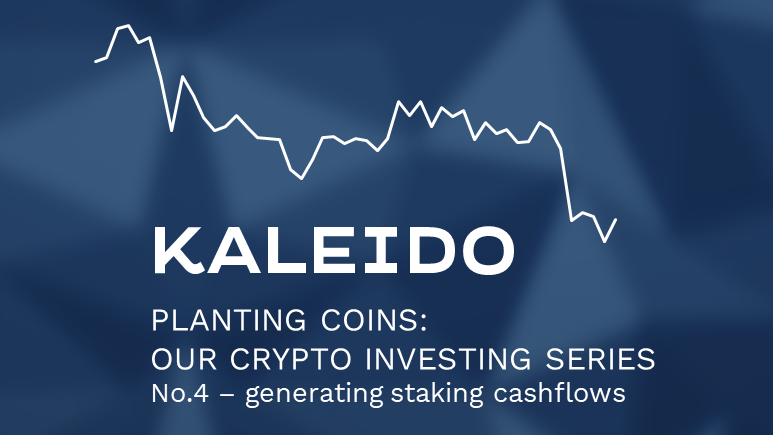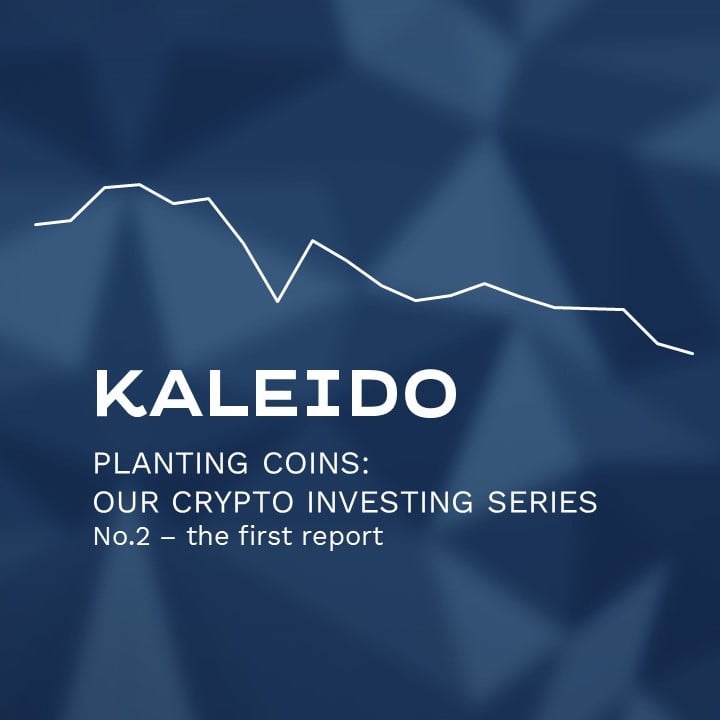Planting Coins: Sixth Report
Management Summary After a great start into 2023, our Crypto Garden portfolio is currently at 120.4 points. In March, we observe a strong rise in...
Please click on the blue "+" sign to open the full menu.
We have the right products for you, for a secure future.
We provide you with the right advice, to be future-proof.
It all starts with a friendly conversation. Just contact us.
4 min read
 Markus Abbassi
:
November 16, 2022
Markus Abbassi
:
November 16, 2022
We are in the midst of a crypto winter, and it is not the first since the launch of Bitcoin in 2008. Blockchain technology has been the talk of the town for a few years now, and so have cryptocurrencies - at least during the hype phases.
Although many believe in the long-term potential of the technology and the business models and values behind it, this belief is put under enormous strain during periods of sharp drops in cryptocurrency prices. Typically, the market finds the bottom when all market participants capitulate.
After several months of watching imploding stablecoin ecosystems, over-leveraged hedge funds, and illiquid and notably under-regulated crypto exchanges, it is now time to look ahead, slowly but surely.
The crypto market is still a very young, risky, illiquid, and correspondingly volatile market. But where risks exist, there are always opportunities to profit. In a market with still high barriers to entry, especially in education and know-how, we would like to take you on a journey where you can experience the market dynamics on a concrete crypto portfolio and perhaps suddenly see topics like diversification and correlation from a different perspective. The following investment posts will regularly report on the movements in the portfolio from the perspective of our crypto specialist Markus Abbassi.
We have a concrete framework and set of rules for portfolio construction. Topics such as portfolio components, diversification, portfolio construction as well as conditions for rebalancing and risk management are clearly defined before the portfolio is launched.
We use a simple approach to assemble and plant our crypto garden. For this purpose, we set various criteria, which we will discuss in more detail in the coming weeks.
Start date: The portfolio started on November 2, 2022 at 19:00 CET.
Implementation: For the implementation and tracking of the strategy we use the crypto exchange Kraken and its price data and staking rewards.
Selection: We select 10 coins which are established and have the highest possible market capitalization and high developer activity.
Diversification: We weight all coins equally in the target allocation, i.e. we invest in ten different coins with a target weight of 10 %. Furthermore, the coins should also differ in terms of functionality or area of application.
Portfolio construction: We distribute the purchases over time and invest 1/3 of the target investment amount in the first week and then 1/6 over each of the next four calendar weeks. The individual investment times during the weeks are chosen according to the situation.
Rebalancing: For cost and efficiency reasons, rebalancing is carried out at most once a month, at the end of each month, if the weight of a coin in the portfolio deviates by more than 5 percentage points from the target weight.
Staking: Coins that can be staked directly on Kraken and thus generate rewards and cash flows are staked. In order to ensure liquidity for rebalancing, among other things, coins without a withdrawal function, such as Ether, are not staked. Further, no lending or other optimization strategies take place. Staking is intended to counteract potential coin inflation.
Additional risk management: If significant risks arise from a technical, legal, governance, or other point of view, a coin can be replaced at short notice.
As briefly mentioned above, high market capitalization, high liquidity, and utilization or developer activity are the central arguments for our selection. For the latter, we reference the GitHub Development Landscape from CoinShares and Bloomberg (as of September 30, 2022). Furthermore, the selection focus should be on blockchain infrastructure and not on usage tokens such as those from exchanges or other companies. Likewise, meme tokens are to be avoided. For the further analysis, we use the coin table and the classifications of Messari as of October 30, 2022.
We build a portfolio by core-satellite method in the ratio 70/30 and choose coins mainly by market capitalization and developer activity. The first ten selected coins are: BTC, ETH, ADA, SOL, MATIC, DOT, ATOM, NEAR, LINK as well as MINA.
In line with our Kaleido philosophy (see Kaleido - investments), which we also implement in the traditional area, the portfolio is to follow the Kaleido Core-Satellite approach. The core consists of 70 % weight and the satellites of 30 %.
Core A: Top-10: Weight 40 %: We select the top-10 coins and choose the four that are closest to our criteria. They are Bitcoin (BTC) (#1)*, Ethereum (ETH) (#2), Cardano (ADA) (#9), and Solana (SOL) (#10). BTC, ETH, and SOL all have relatively high numbers of GitHub commits (137, 392, 123) and also high numbers of active developers (335, 2010, 340). We deliberately exclude the stablecoins USDT (#3), USDC (#5), BUSD (#7), the coins BNB (#4) from Binance as well as XRP (#6) from Ripple, as well as Dogecoin (#8). If we divide the four coins by sector, we have one 'Currency', as well as three 'Smart Contract Platforms'.
Core B: Top-20: Weight 30 %: From the next ten coins, we again select three. These are Polygon (MATIC) (#11), Polkadot (DOT) (#12) and Cosmos (ATOM) (#20). Here, in addition to a scaling solution, we selected two smart contract platforms with interoperability characteristics. Polkadot and Cosmos are among the top performers in terms of commits (603, 135) and developers (712, 532). It is also interesting to observe the positioning of institutional investors, for whom DOT and ATOM are particularly popular according to various reports. Among others, we missed Avalanche, Uniswap as well as the exchange token UNUS SED LEO here.
Satellites: Weight 30 %: For the remaining three coins, we once again take a look at our main criteria as well as the diversification aspect, choosing the strong development platform NEAR Protocol (NEAR) (#28) (237 commits and 189 developers), the market-leading blockchain oracle Chainlink (LINK) (#22) as well as the "emerging asset" MINA Protocol (MINA) (#76), the supposedly "lightest" blockchain, which can also be classified in the "scaling" area.
We will continuously report on the development of our crypto portfolio. Don't forget to sign up for our newsletter to get the latest insights straight in your mailbox!
*The ranking refers to the market capitalization of the corresponding coins as of October 30, 2022 (CoinMarketCap).
Disclaimer: This piece of information is for marketing and entertainment purposes only and should not be taken as investment recommendation. Remember that all investments involve risk. Please read our full Marketing Disclaimer here.

Management Summary After a great start into 2023, our Crypto Garden portfolio is currently at 120.4 points. In March, we observe a strong rise in...

Management Summary Today's focus is on staking - the process of holding onto a cryptocurrency to support the operation of a blockchain network and...

Management Summary The crypto investing series starts under adverse market conditions. Our investment strategy was able to compensate or dampen...